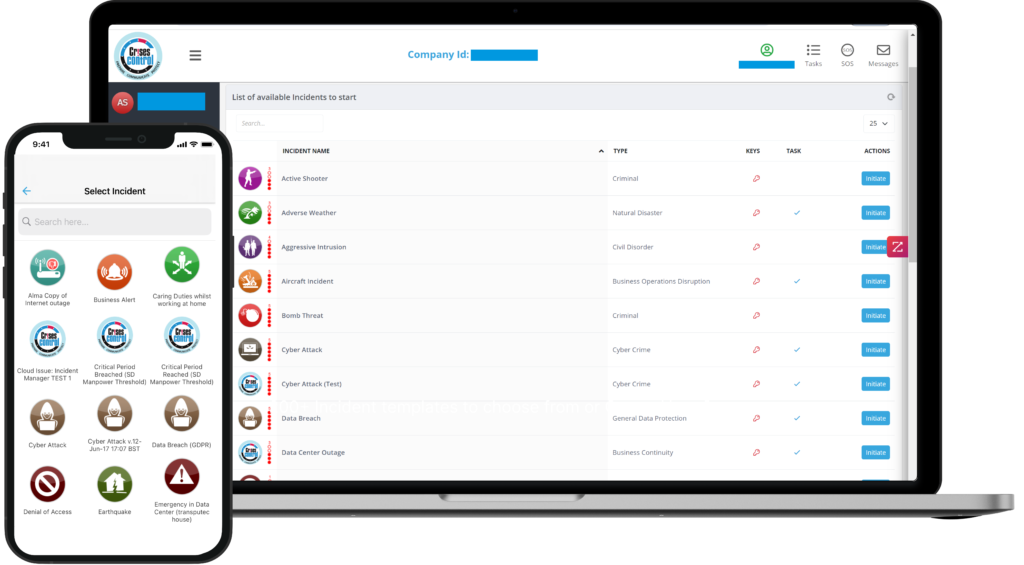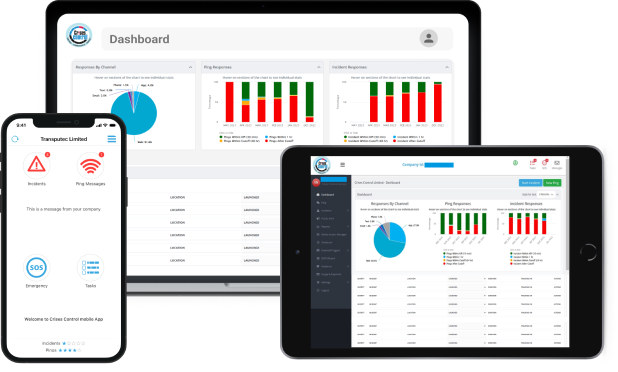Written by Anneri Fourie | Crises Control Executive
When a real crisis strikes, many organisations freeze. Despite having documented procedures and approval-ready plans, confusion often takes over in the moments that matter most. One phrase we hear time and again after a major incident is:
“We had no idea what to do.”
That sentence doesn’t come from a lack of effort or care. It comes from plans that looked good on paper but fell apart under real-world pressure. And the consequences can be costly, not just in pounds, but in trust, safety, and time.
This blog explains why most crisis management plans don’t work when you need them most, and more importantly, what you can do about it. We’ll explore how modern tools like mass notification software and incident management software make all the difference. We’ll also show how Crises Control helps organisations move from reactive to truly crisis-ready.
Why Most Crisis Management Plans Fail When It Matters Most
A plan that fails during a crisis usually doesn’t fail because it’s missing. It fails because it’s hard to find, hard to use, or out of sync with how people actually work.
Here are four reasons crisis management plans often collapse under pressure, and how to fix them.
1. The Plan Is Outdated and Hard to Access
Far too many plans live in static documents, PDFs stored on a shared drive, or printed manuals sitting on shelves. But when disaster hits, nobody has time to dig through files or search old email chains. Imagine a building evacuation plan is saved on a server that’s just gone down due to a power cut. That plan is now useless.
The fix: Make your plan accessible to everyone, anywhere, at any time. That means having a digital version available on mobile and web platforms, with pre-set actions and workflows ready to launch.
2. Communication Breaks Down
Crises demand quick, clear communication. Yet many teams still rely on slow methods like phone trees or mass emails. These cause delays, confusion, and mixed messages. During a chemical leak, for example, staff might receive contradictory instructions because communication hasn’t been centralised.
The fix: Use mass notification software that sends updates across multiple channels instantly; SMS, email, app alerts, voice calls, and confirms who has received them.
3. Nobody Knows What’s Actually Happening
When a crisis unfolds, leadership needs a clear picture of what’s going on. But without proper tools, information gets trapped in silos. One department might be dealing with the issue, but others are unaware or misinformed.
The fix: A strong plan should be backed by incident management software that provides real-time visibility across all teams and sites. Everyone sees the same picture, and leadership can act quickly.
4. Plans Are Unpractised and Untested
Many organisations treat crisis plans like insurance documents: something you keep in a drawer and hope never to use. But if you haven’t tested your plan with real people and real scenarios, it will fail when you need it.
The fix: Run regular simulations that involve key staff and departments. Use tech to rehearse your responses and refine your processes before a real incident happens.
What Crisis Management Plans Need to Look Like Today
Crisis planning has changed. It’s no longer just about having a document, it’s about building a responsive system.
An effective plan should include:
- Multi-channel communication protocols
- Clearly defined roles and escalation paths
- Instant mobile and web access
- Integrated notification and incident management tools
- Automated workflows for different crisis types
- Testing and simulation features
Crises Control brings all these elements into one platform, giving you a system that works when the pressure is on.
How Mass Notification Software Supports Crisis Management Plans
Clear and immediate communication can stop a crisis from becoming a disaster. That’s where mass notification software comes in.
With Crises Control’s Ping module, you can notify hundreds or thousands of people instantly. Messages go out across SMS, voice, app alerts, and email. You can pre-write templates for different types of emergencies; fire, cyberattack, security breach, and launch them with one click.
You also get delivery tracking, so you know exactly who has received the alert and who hasn’t.
Why it matters: Imagine a ransomware attack has just taken your main systems offline. With Crises Control, you can alert every team, provide instructions, and escalate key tasks, all within minutes. No confusion. No guesswork.
Interested in our Ping Mass Notification Software?
Efficiently alert everyone in seconds at scale with our Mass Notification Software – PING, get the message out fast and ensure rapid response and recovery.

How Incident Management Software Enhances Crisis Response
Getting the word out is just the first step. After that, people need to know what to do, when to do it, and who is doing what. This is where incident management software becomes essential.
Crises Control’s Incident Manager provides:
- A live dashboard for crisis coordination
- Task assignment and tracking across teams
- Pre-defined workflows triggered by incident type
- Real-time updates for all users
- Automatic record keeping for audits and reviews
Real-world scenario: Say a data breach has been detected. With a single trigger, Crises Control notifies the IT team, legal, communications, and senior leadership. Each group receives specific tasks. You can watch progress in real-time, follow up where needed, and document every step automatically.
This kind of clarity isn’t just useful. In regulated industries, it’s essential.

Interested in our Incident Management Software?
Customise your Crisis Incident Management Software to meet your specific needs with our flexible tools & stay connected and informed during the crisis and incident management process
A 5-Step Framework to Fix Your Crisis Plan Now
If your current plan hasn’t been tested recently, it’s probably not ready. Here’s a simple but effective way to build a better one:
1. Review What You Already Have
Ask your team: if a major crisis happened right now, where would we start? Identify what’s out of date, hard to access, or unclear.
2. Use the Right Technology
Replace manual steps with automated tools. A solid platform for alerts and task management saves time and reduces mistakes.
3. Rehearse With Real Scenarios
Test your plan with fire drills, cyberattack simulations, and other realistic scenarios. The goal is not to “pass” but to learn.
4. Make the Plan Easy to Reach
Use systems that work on all devices. People must be able to act, whether they’re in the office, at home, or travelling.
5. Measure and Improve
After each test or incident, review what worked and what didn’t. Use built-in reporting tools to get better each time.
Crises Control makes every step of this process simpler and more effective.
How Crises Control Helps You Build a Crisis-Ready Organisation
Crises Control isn’t just another tool. It’s a fully integrated platform designed to turn your crisis plan from a static document into a living, working system.
Here’s how we help you respond faster and smarter:
- Instant Communication, No Delays: Send targeted alerts to staff, suppliers, and emergency services across multiple channels, and track delivery.
- Total Visibility Across Teams: Our incident management dashboard shows you what’s happening, who’s responsible, and what still needs to be done.
- Automated, Consistent Actions: Trigger pre-set workflows for different crisis types. This removes uncertainty and speeds up response.
- Always Compliant, Always Ready: All activity is logged automatically for compliance reviews. Reports are generated instantly to meet audit or legal requirements.
- Mobile-First Access: Your team can manage everything from a laptop, tablet, or mobile, anywhere in the world, 24/7.
Whether you’re managing a cyberattack, natural disaster, IT outage or safety threat, Crises Control gives you the tools to act with speed, coordination, and confidence.
Final Thoughts: Make Your Next Crisis One You’re Ready For
You can’t stop every crisis. But you can control how well you respond.
Most organisations don’t realise their plan doesn’t work until it’s too late. Don’t let the first real crisis be the test run for your strategy. Fix the gaps now, while you still have the time to prepare.
With Crises Control, you’re not just reacting. You’re responding with purpose, precision, and professionalism.
Contact us now for a free demo and discover how Crises Control can help you build a crisis management system that actually works.
Request a FREE Demo

